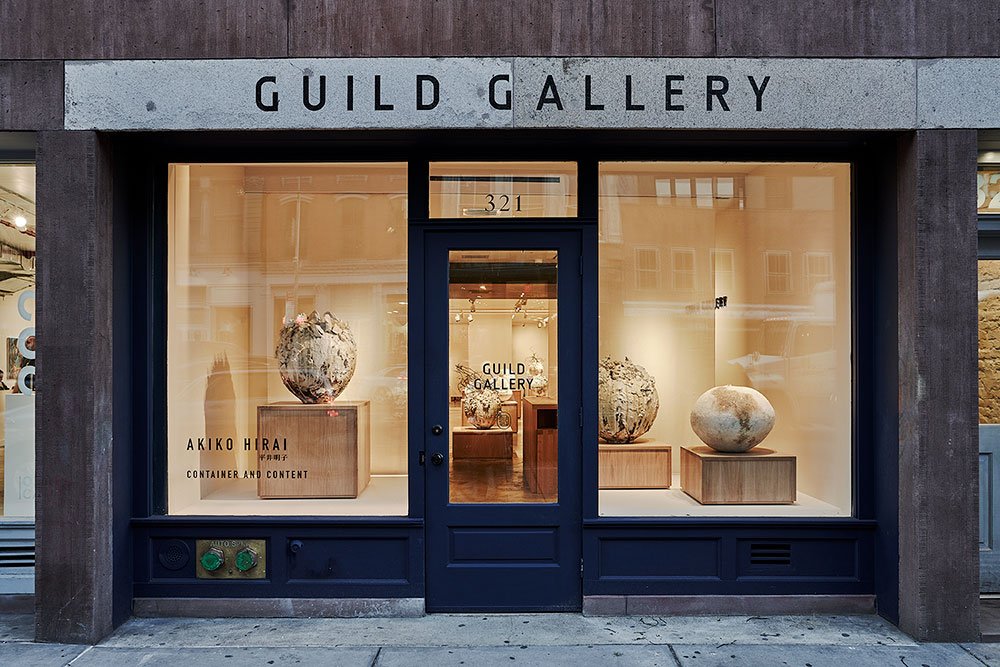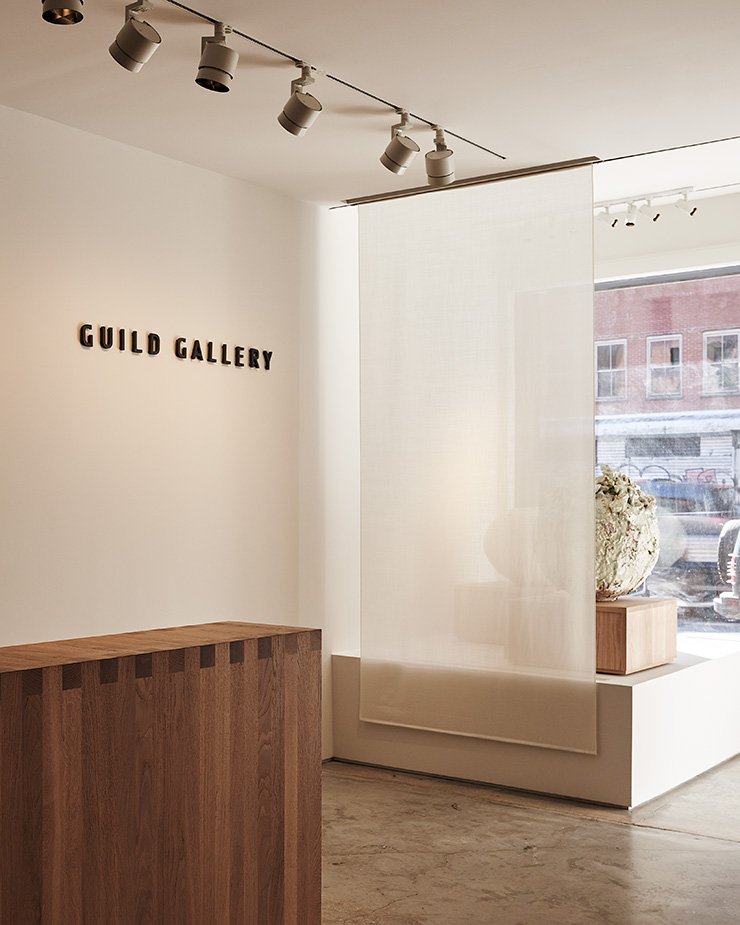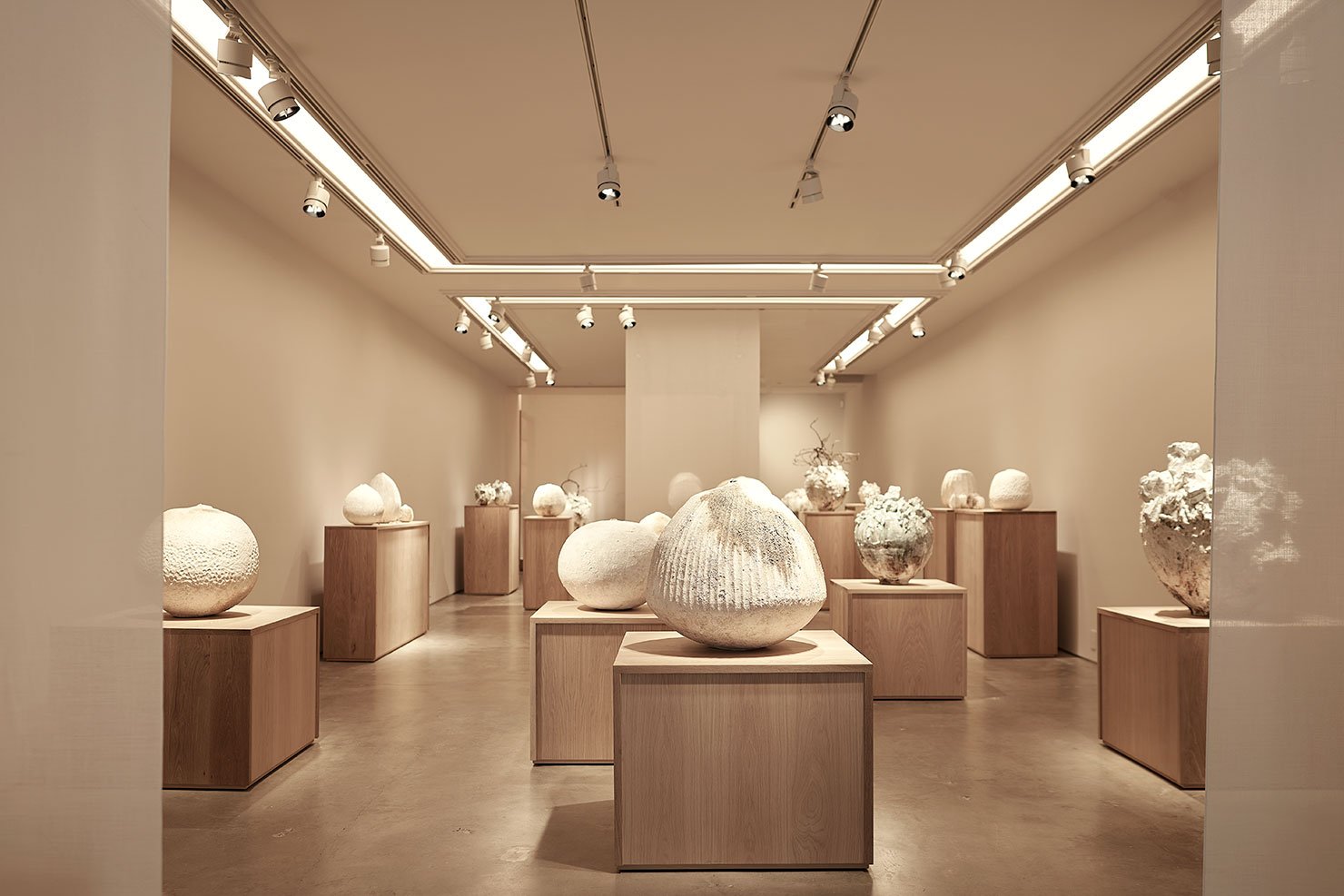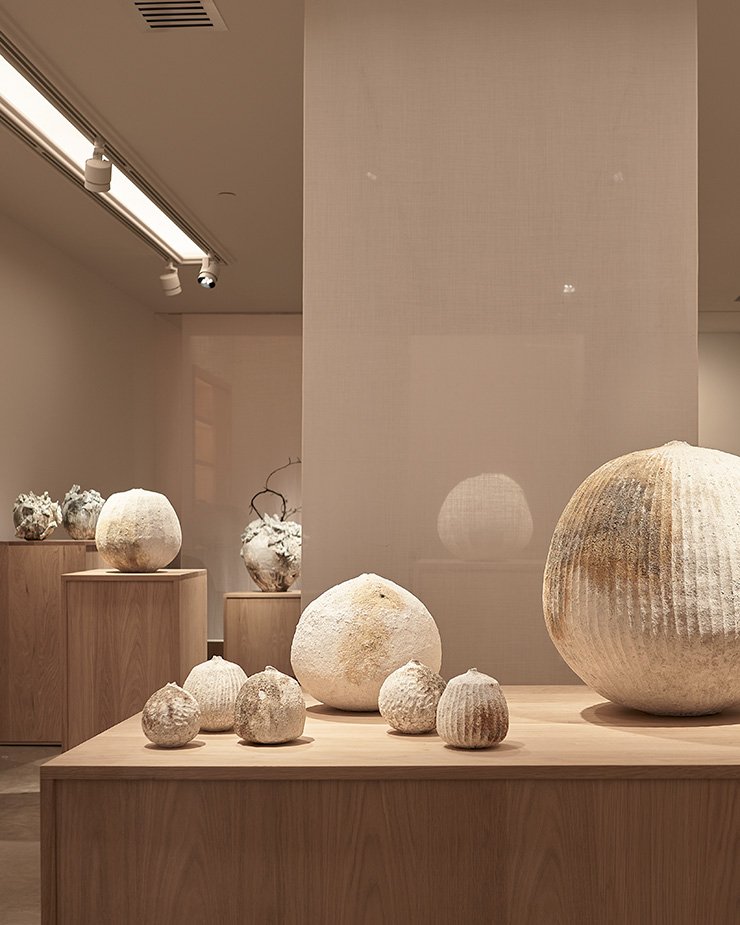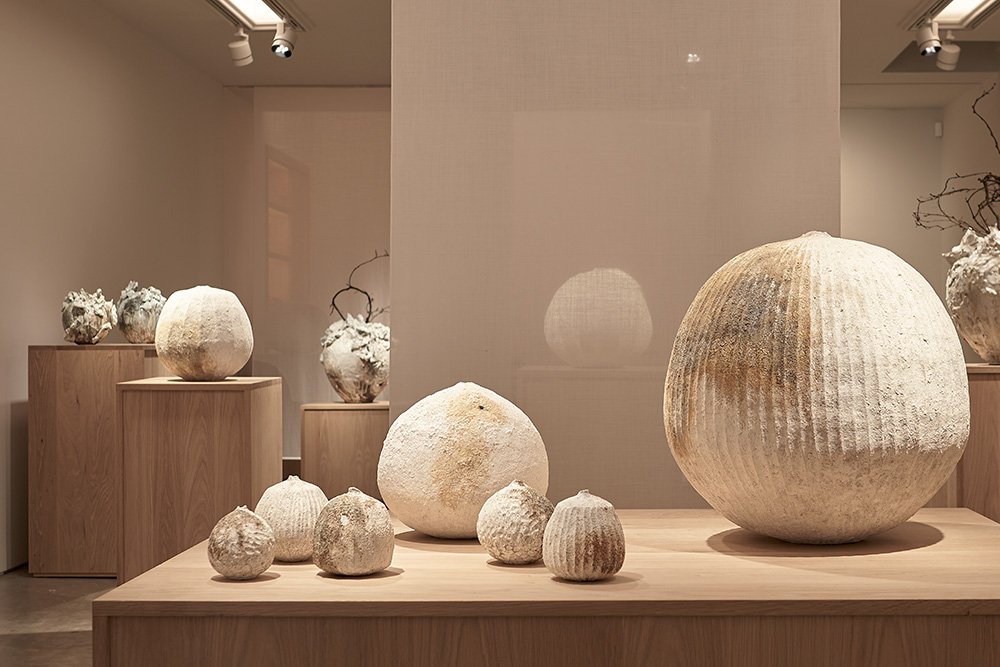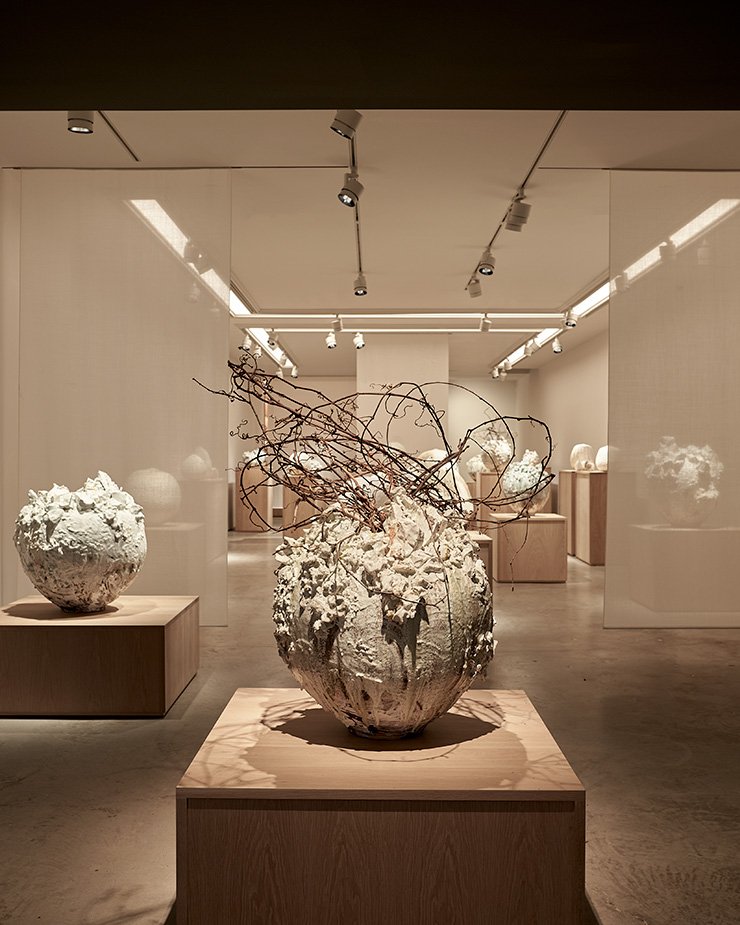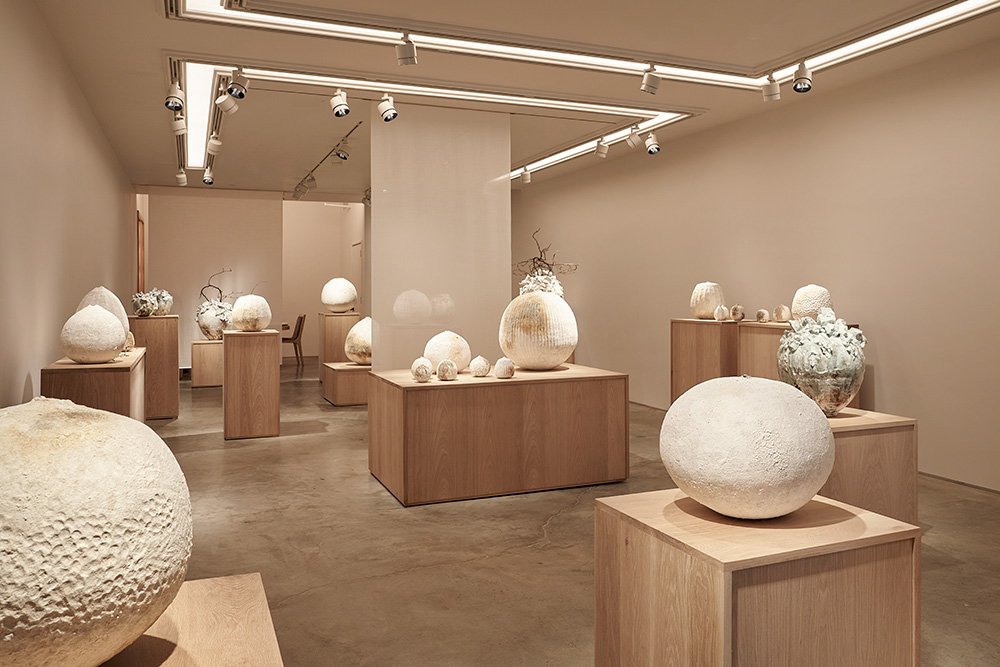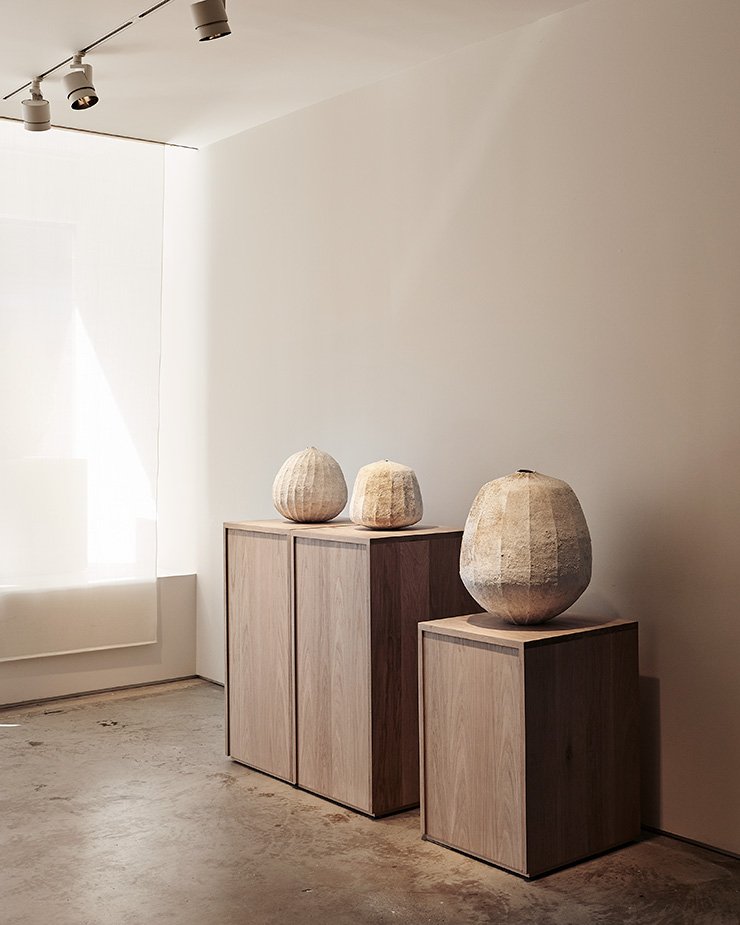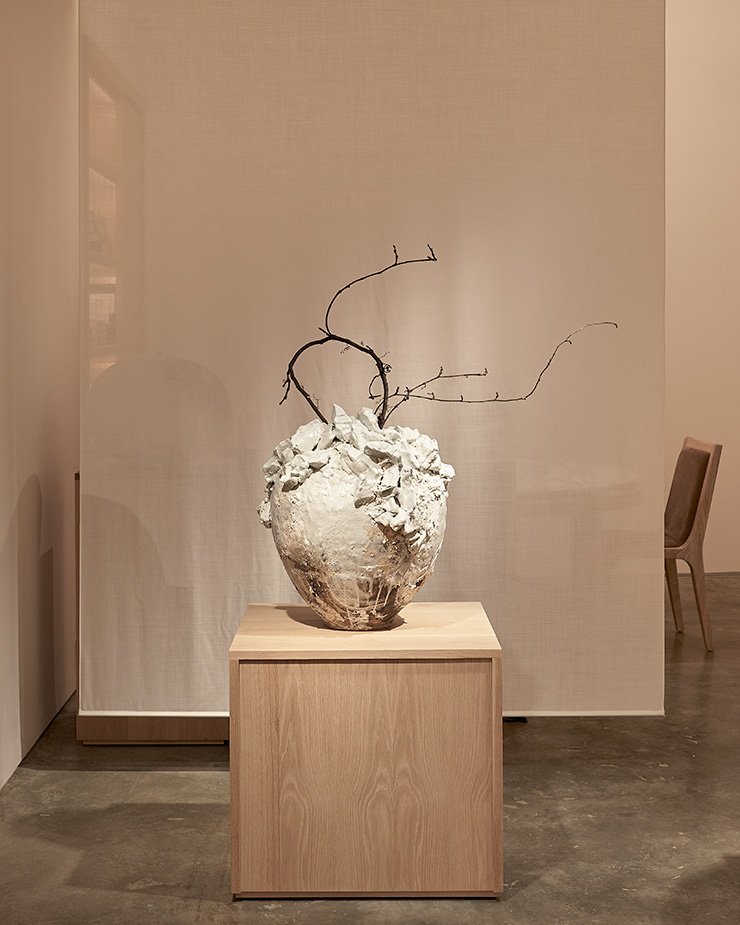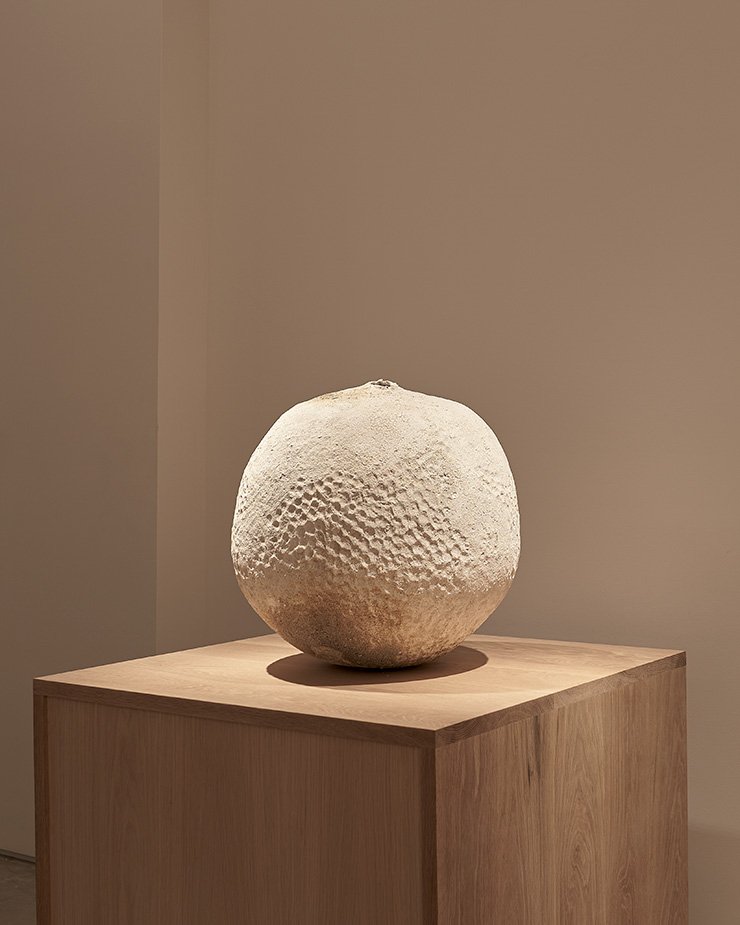We are proud to introduce Guild Gallery, a new space that celebrates the making of art objects by contemporary masters, drawing upon the millenia-long history of the decorative arts. Located on Canal Street—that vibrant, propulsive stretch of New York City’s rising art scene—Guild Gallery will open in November, with a series of exhibitions representing a dozen artists.
Guild Gallery is the natural extension of Roman and Williams Guild, on the corner of Howard and Mercer. When we opened the doors of the Guild nearly four years ago, this was the realization of a decades-long dream: to create a living organism of people, objects and furnishings—an eclectic world, a modern-day guild of the senses.
We designed the Guild as a place to showcase the furniture that we make alongside the work of artisans we most admire for their skill and dedication to technique. We wanted to emphasize the everyday functionality of remarkably formed items and to emphasize the significance of living with very beautiful things while valuing the utility of expert crafted pieces.
Guild Gallery is the next stage of evolution in this dialogue. Now, we intend to build on our commitment to help people appreciate the artistry in design as we celebrate individual makers. While the Guild celebrates a beauty that derives from function, the Gallery focuses purely on form. Whereas the Guild is all about an eclectic mix, the Gallery will spotlight the object, artist, and process.
Initially, we will represent a group of twelve remarkable artists, makers of extraordinary art objects and furniture–sculptors and other creators whose medium might be ceramic, glass or wood. Our selection process has been intense; we value all the makers and designers we represent at the Guild, and choosing just twelve required us to consider their works in ways we hadn’t before, looking harder and deepening our understanding of the pieces and the artists who made them.
We call them “artists” because that’s who they are. The Guild was founded on the principle that art and craft are not mutually exclusive entities. Think of classical Grecian urns, crafted as functional objects that nonetheless engage with movement, line, and color. So, too, the contemporary works that we show at the Gallery experiment with line, form, and material, fusing the ancient and the modern through traditional techniques and references to a millennia-old lineage. But these are living pieces, made by living artists. We want to introduce you to artists who are working today, so that you can follow their trajectories and understand their work as an ongoing, organic narrative, as collectors or even just as enthusiasts.
These works are living pieces, not just because you can—should—live with them, but also because they are made with materials that feel alive, like wood from trees or gloriously malleable clay. This is a guiding principle of everything we do in our own design practice and, by extension, at Guild Gallery. The wooden pedestals on which we will display the works are of our own invention. This is a venue designed to support the rigor and discipline of the artists as they fashion their materials, to honor the human scale of their works. Guild is a gallery that embraces warmth, purity and focus.
These are pieces that are meant to be communed with, in our homes. So while key pieces by an individual artist are displayed at the Canal Street Guild Gallery to be fully appreciated as works of art in their own right, others will be seen at the Guild on Howard and Mercer, just a stone’s throw away, interacting with other objects and furnishings, as it might be in your home. Thus we hope to foster connoisseurship, eliciting meaning and nuance from the works, but also demonstrate how they might be lived with.
Guild Gallery opens in November with a show of works by Japanese-born, London-based ceramist Akiko Hirai. Hirai’s forms investigate texture and participate in a passionate conversation about the science of traditional and modern pottery. We invite you to explore Hirai’s work at Guild Gallery, to ponder the power of exchange across cultures and countries, the techniques traded, exchanged and appropriated. Objects like these contain profound stories about nature, culture, domesticity and craft.
We greatly look forward to introducing you to all the artists with whom we are fortunate enough to work.
